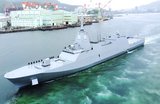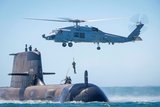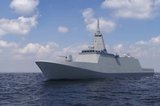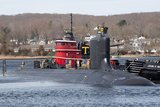US Navy Awards Lockheed Martin Nearly $10 Million to Design New Surface Ship Electronic Warfare System
The US Navy recently selected Lockheed Martin to provide its next-generation of electronic warfare (EW) systems for surface ships, which will significantly improve the Navy’s ability to detect threats to the fleet.
Under an initial $9.9 million contract award, the company will produce a preliminary design for the Surface Electronic Warfare Improvement Program (SEWIP) Block 2 Upgrade by June 2010. The contract includes options, if exercised, totaling nearly $167 million.
Under SEWIP, the Navy is pursuing an evolutionary series of enhancements to its SLQ-32 EW system. This contract is part of a series of block upgrades intended to provide technological advances and add functional capabilities incrementally.
Lockheed Martin will provide a modular solution for Block 2, based on its Integrated Common Electronics Warfare System, demonstrated at sea last summer.
This approach uses commercial-off-the-shelf (COTS) electronics and provides the Navy with the latest surface ship EW capabilities, as well as enhanced flexibility to upgrade the technology to address emerging threats.
“This is a proven solution that will improve the surface navy’s electronic warfare system,” said Carl Bannar, vice president and general manager of the Lockheed Martin Radar Systems business in Syracuse, N.Y. “By choosing Lockheed Martin in this competition, the Navy has endorsed our technical approach, which includes COTS components for proven cost savings and ease of maintenance.”
More from Naval Warfare
-
![Future of the Canadian Patrol Submarine Project is still unclear]()
Future of the Canadian Patrol Submarine Project is still unclear
The Canadian government remains tight-lipped on the timeline and funding required for the next steps of its Canadian Submarine Patrol Project, which should offer improved capabilities for the country’s navy.
-
![Mitsubishi eyes future with Australia’s Mogami selection]()
Mitsubishi eyes future with Australia’s Mogami selection
With Australia’s selection of the Mogami-class for Project Sea 3000, Mitsubishi is investigating local production in the next decade as potential export opportunities emerge.
-
![UK to join US Navy’s Virginia-class submarine assembly effort to speed up construction]()
UK to join US Navy’s Virginia-class submarine assembly effort to speed up construction
The expansion of the Virginia-class submarine construction to UK shores could accelerate the project as US shipbuilders continue to fall short of delivery goals.






















